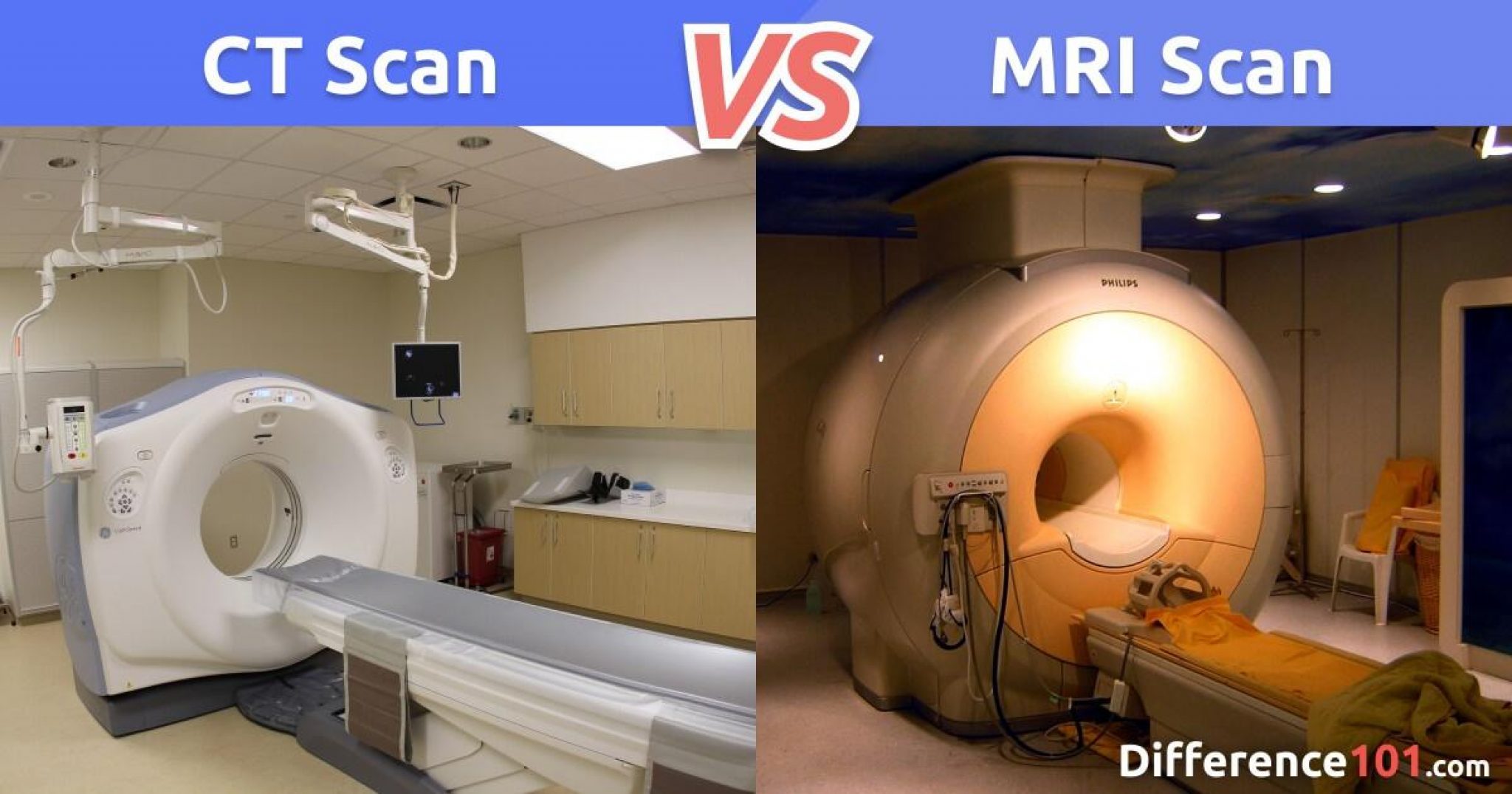
CT Scan vs. MRI What’s The Difference? Difference 101
Generally, CT scans are better at spatial resolution, while MRIs are better at contrast resolution. That means CT scans are good at showing us where the edges of things are — where this structure ends and that other one begins. MRIs are good at showing us the differences between various parts of the body and can help cancer tissue stand out.

What it’s Like to Have a MRI Scan and CT Scan The Plumbette
For instance, a CT scan, as with x-rays, often takes five minutes or less while MRIs can take 30 minutes or more. Doctors also use MRIs and CT scans for different reasons. A CT scan is very helpful in diagnosing severe injuries of the chest, head, spine or abdomen, particularly fractures.
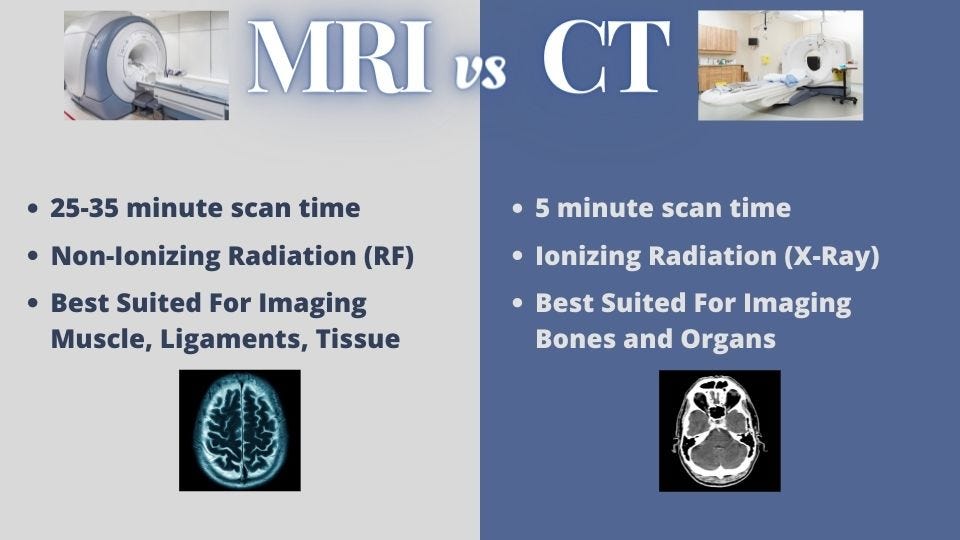
CT Scan vs MRI (What’s The Difference?) by MRIPETCTSOURCE Medium
CT (Computer Tomografie) Bij een CT-scan wordt ook gebruik gemaakt van röntgenstraling, alleen worden nu dwarsdoorsneden gemaakt die door de computer worden vertaald in 3D-beelden. Zo kunnen alle organen, maar ook afwijkingen aan botten of weefsels worden bekeken. MRI (Magnetic Resonance Imaging)

How to Easily Tell the Difference Between MRI and CT Scan Kidney Cyst, Spinal Canal, Cat Scan
Cost: CT scans are almost half the price of MRIs. The average computed tomography scan costs around $1,200 while an MRI is about $2,000. Speed: CT scans take much less time than MRIs. The exact time required depends on whether you need a contrast dye for the procedure, but MRIs always require more time for the scan.
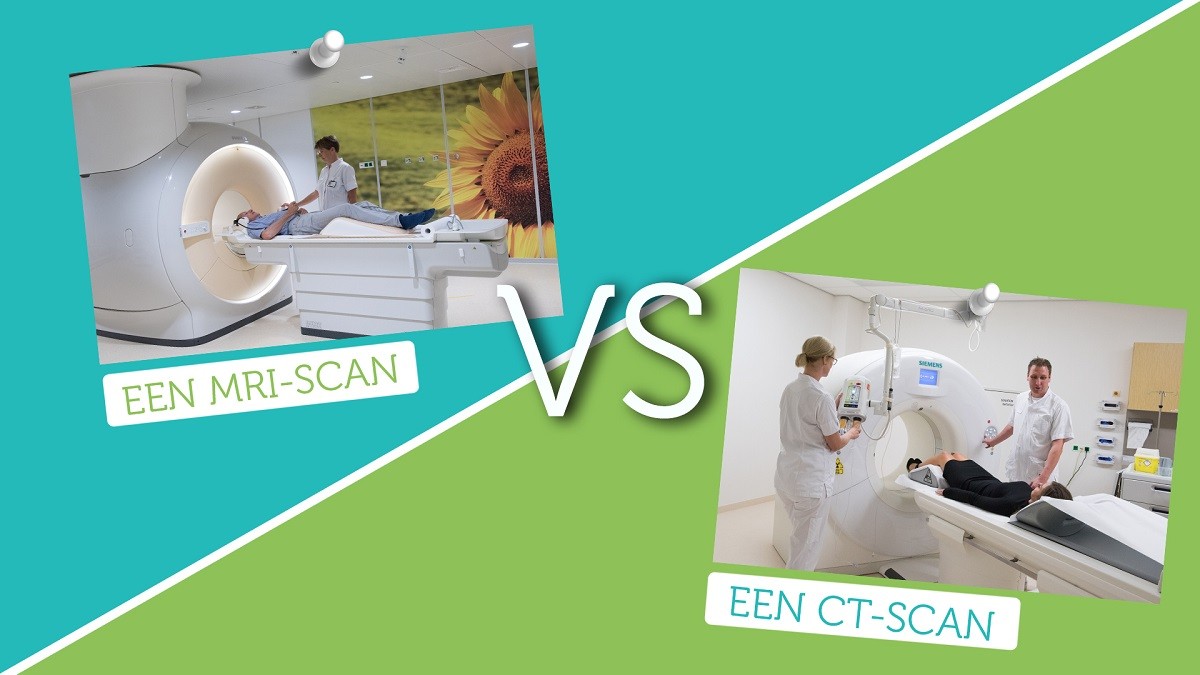
Cat Scan Vs Mri
MRI vs. CT Scan: Unveiling the Differences. January 13, 2024. Magnetic Resonance Imaging (MRI) and Computed Tomography (CT) scans are two imaging modalities that stand out as essential components of contemporary healthcare. This technology has completely transformed healthcare practitioners' understanding and visualization of the human body.
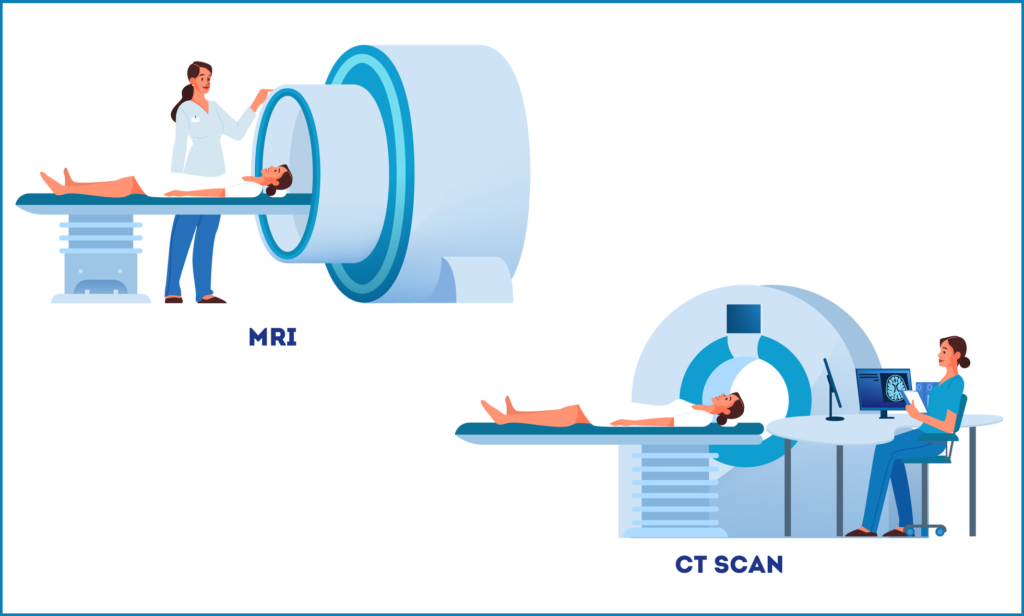
CT Scan vs. MRI Do You Know the Difference? (2023)
Het verschil tussen een MRI-scan en een CT-scan. De werking van beide apparaten gaat volgens hetzelfde principe: met behulp van een computer kunnen dwarsdoorsneden van het menselijk lichaam worden gemaakt. We kunnen deze dwarsdoorsneden in alle richtingen reconstrueren en we kunnen er driedimensionale beelden uit berekenen. De CT-scan maakt.
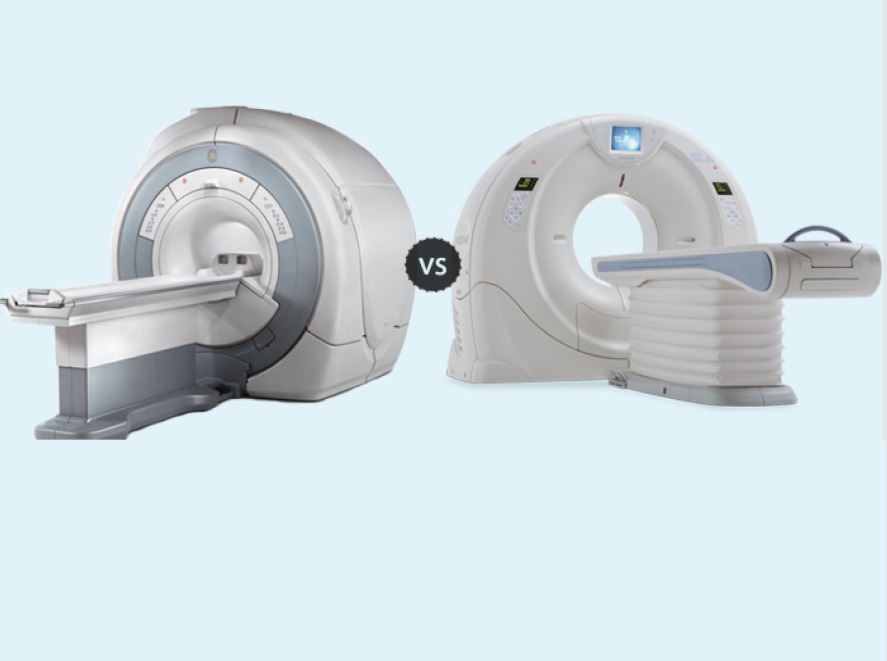
How is CT or CAT Scan Different From MRI? WoW Health
How you prepare. Depending on which part of your body is being scanned, you may be asked to: Take off some or all of your clothing and wear a hospital gown. Remove metal objects, such as a belt, jewelry, dentures and eyeglasses, which might interfere with image results.

Frequently asked questions about MRI Scans Seton Imaging
For example, CT scanners tend to be a bit quieter than MRI scanners and may be better for people who suffer from claustrophobia. MRI vs. CT scans cost. MRIs tend to cost at least twice as much as CT scans for various reasons, including imaging clarity. This may sway some peoples' decision as to whether to get a CT scan or MRI scan.

CT Scan vs. MRI What's the Difference? The Healthy
De verschillen tussen een CT en MRI scan zijn: CT maakt gebruik van röntgenstraling en is daardoor schadelijk voor het lichaam. MRI maakt gebruik van magnetische velden is niet schadelijk voor het lichaam. CT duurt minder lang, vaak 5 tot 10 minuten. MRI duurt langer in tijd, een onderzoek duurt tot wel anderhalf uur.
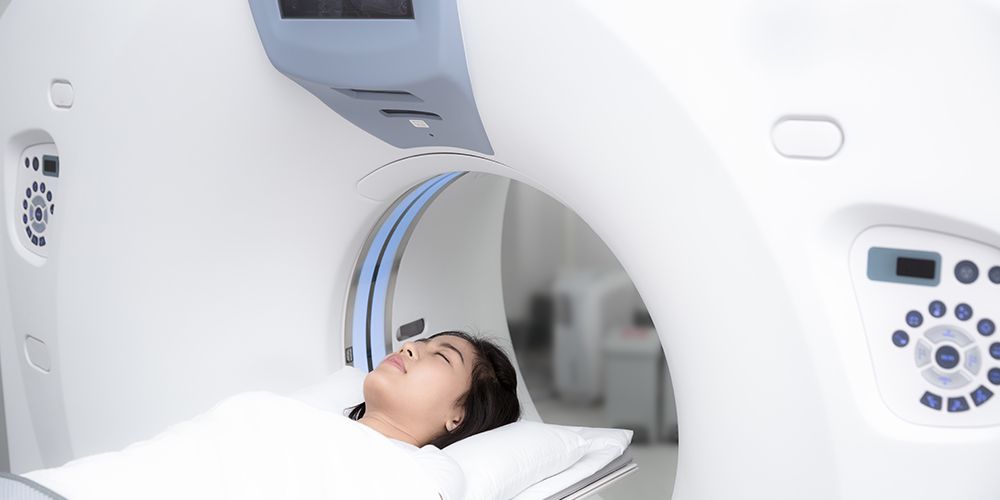
Verschil tussen CTscan en MRI bij medisch handelen
The diagnosis of traumatic brain injury is a clinical decision, however, imaging, particularly CT, plays a key role in diagnostic work-up, classification, prognostication and follow-up. They can be broadly divided into closed and penetrating head injuries 4: closed head injury. vastly more common. blunt trauma: motor vehicle collision, assault.
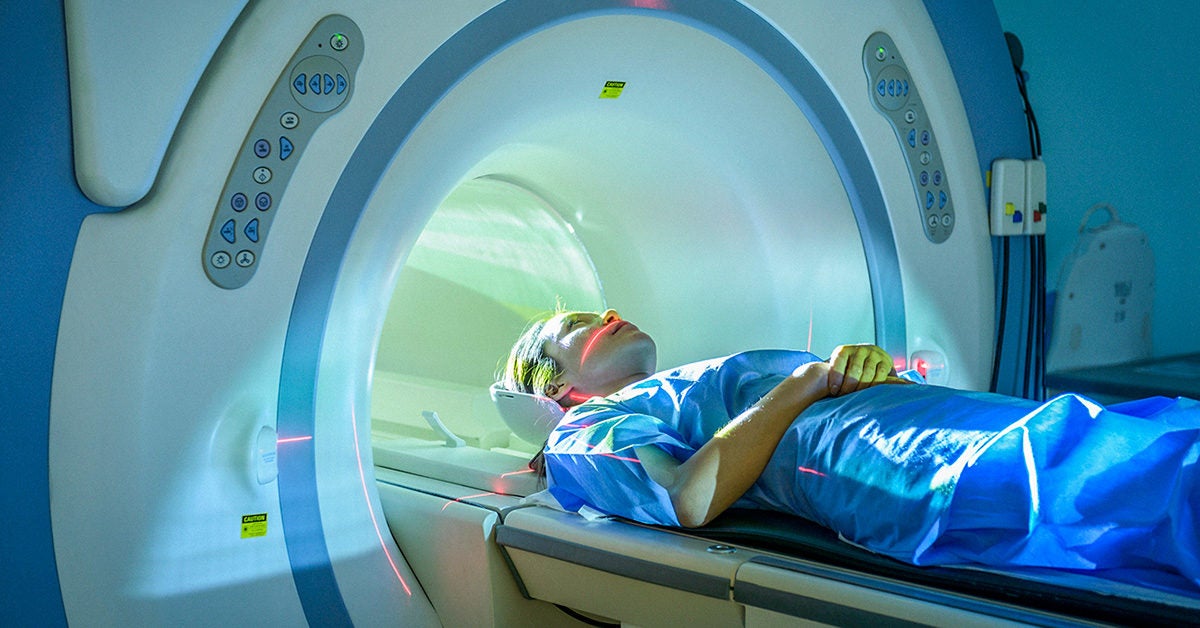
MRI vs. PET Scan Which One You Should Get and Why
Tijd. Een CT-scan gaat over het algemeen wat sneller dan een MRI-scan. Een CT-scan duurt meestal 5 tot 15 minuten, terwijl een MRI-scan wel tot een halfuur of langer kan duren. Om die reden wordt er bij spoed vaak gekozen voor een CT-scan. Een MRI-scan geeft een meer gedetailleerd beeld weer van onder andere weefsels.

MRI and CT Scan Archives Page 2 of 2 Star Imaging
MRI and CT scans - indications and contraindications. CT is more commonly used to diagnose emergencies, while MRI is a more precise method that is ideal for diagnosing diseases of the nervous system, muscles, joints, ligaments and tendons. In terms of contraindications, MRI has limitations for patients with pacemakers or other electrical.

MRI Scan Vs CT Scan For Brain Deep Medical Centre
CT scans use X-rays to make images of bone structure, tumors, blood clots, and blood flow. MRIs use radio waves and strong magnets to provide more detailed images of organs and soft tissues, including joints, ligaments, nerves, and spinal discs. The images from each type of scan allow doctors to see different things.

MRI Scan Definition, Uses, and Procedure Healthtian
Ultrasound imaging offers the advantage of instant gratification. Because the echo imaging happens in real-time, users are given the ability to see any movements or changes happening during the scan. CT scans have a quick turnaround time as well, usually less than 5 minutes. MRI's produce images that are high-quality, but the turn-around time.
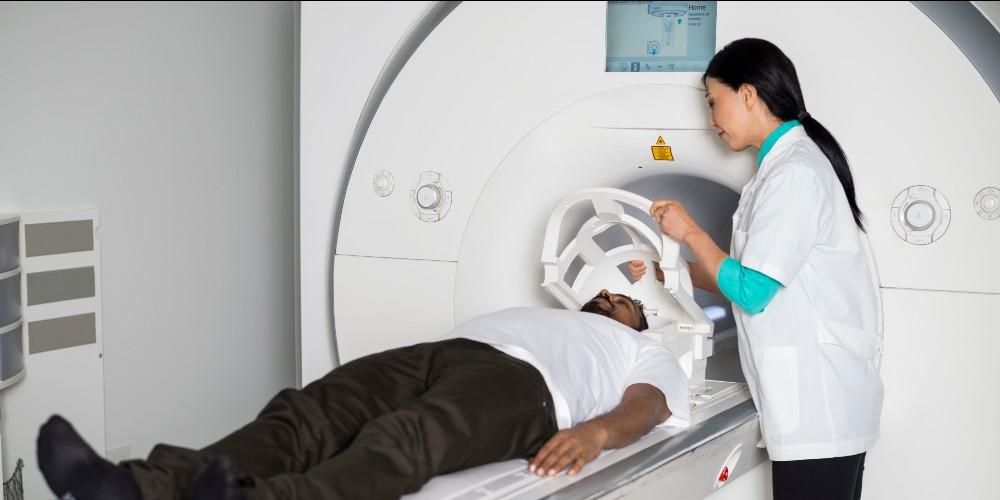
Verschil tussen CTscan en MRI bij medisch handelen
CT (Computed Tomography) and MRI (Magnetic Resonance Imaging) are radiology tests that allow doctors to visualise the body's internal anatomy in cross section. Each plays a crucial role in diagnosing various medical conditions and providing essential information to guide patient treatment. The decision between a CT scan and an MRI is based on.

Open MRI vs gesloten MRI Wat is het verschil en welke is het meest geschikt voor u? be settled
CT scans are optimal for viewing bones, such as the spine, and veins to look for clots or aneurysms. Additional differences between CT scans and MRI scans include: CT scans produce images faster, are less expensive, and do not cause claustrophobia. However, they utilize low levels of ionizing radiation, which can slightly increase cancer risk.